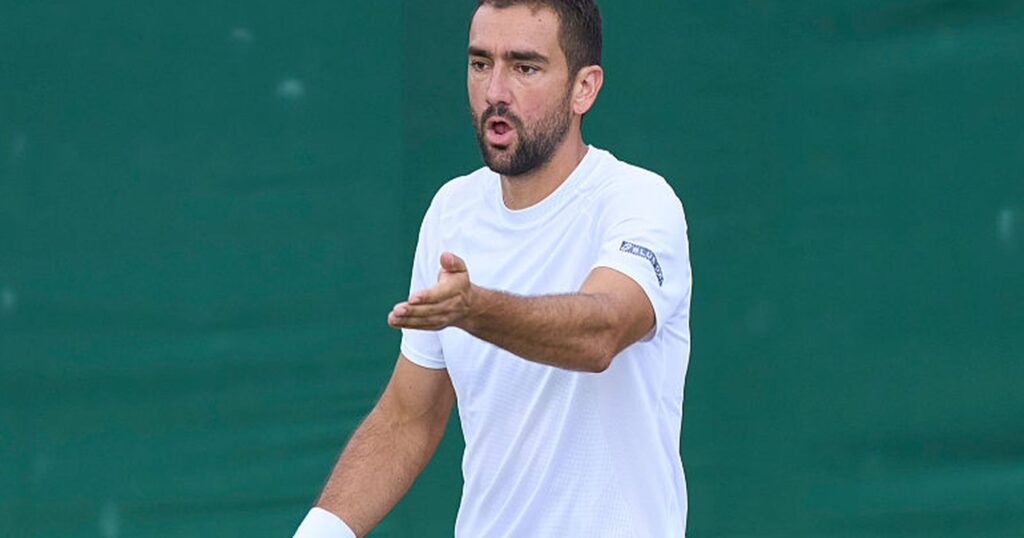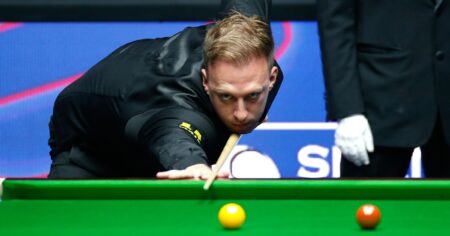The introduction of an AI line-calling system at Wimbledon has encountered various complications, leaving officials and players questioning its efficacy in a sport historically illustrious for its human element. The All England Club’s chief executive, Sally Bolton, had preemptively reassured fans and players that the technology implemented for judging whether a ball is in or out was “sufficiently robust” to handle the challenges of high-stakes matches. Yet, reality has diverged from these assurances, notably during key moments in televised matches.
In an instance that drew considerable criticism, Anastasia Pavlyuchenkova lost a crucial point due to an uncorrected line call, which was missed by the AI system in operation. Following the disputed event, she voiced her frustration to umpire Nico Helwerth, expressing, “You stole the game from me.” This contention punctuated the faltering transition to AI-assisted officiating. The All England Lawn Tennis Club (AELTC) later addressed the controversy, stating, “Following our review, we have now removed the ability for Hawk-Eye operators to manually deactivate the ball tracking.” They further asserted that while human error was the source of the missed call, the necessary adjustments should now prevent a recurrence.
Despite these acknowledgments, discontent with the new line-calling system has been echoed by players throughout the tournament. Belinda Bencic, a seasoned competitor who has navigated the complexities of four different courts at Wimbledon this year, exemplifies this dissent. After securing her spot in the quarter-finals with a victory over Ekaterina Alexandrova, she candidly expressed her distrust in the AI system. “I don’t want to talk about it too much, but it’s really stressful,” she remarked, describing how the experience contorts her playstyle. Bencic recounted moments where she almost ceased playing, convinced that a ball she thought was out would be called as such. Yet, athletic instinct urged her to keep playing until the conclusion of each point.
The sentiments mirrored by former Wimbledon runner-up Marin Cilic pointed to an underlying discomfort with removing line judges altogether. In a sport that has relied on these figures for 148 years, Cilic shared his bewilderment about the shift, remarking, “Some were out… I don’t think there is a necessity.” He articulated a nostalgic reference to the role line judges play, emphasizing their experience and contribution to the tournament’s authenticity. By eliminating them, he pondered how current players could transition to more authoritative roles like chair umpires.
Another notable voice, Emma Raducanu, expressed her disappointment at what she referred to as “dodgy” calls. When asked if she trusted the AI line calls, she frankly admitted, “No, I don’t” and encouraged improvements in accuracy. Her observations matched those of Bencic and Cilic, highlighting an emerging trend of players growing skeptical of the technology’s reliability.
Amidst this backdrop of dissatisfaction, Tim Henman, an AELTC committee member and former British No. 1, defended the technological advancements, claiming that the complaints regarding accuracy are unfounded. He asserted, “It’s absolute rubbish” to suggest that calls have been inaccurate. Henman provided context by delineating the difference between human error and technological inaccuracies, maintaining that the new AI systems are merely enhanced versions of existing technology. He suggested that the incident involving Pavlyuchenkova was more a reflection of human oversight than a failure intrinsic to the AI itself.
Support for the AI system also came from players like Alex de Minaur, who, after a hard-fought match against Novak Djokovic, acknowledged the potential for human error in line judging. He opined that players should continue to play until a definitive call is made by the machine, thereby shifting the focus onto performance rather than speculative calls.
The debate surrounding the new AI line-calling system at Wimbledon thus highlights not only the challenges of integrating technology into traditional sports but also the players’ deeply rooted concerns over accuracy and the essence of competition. As the tournament progresses, the eyes of the tennis world will be keenly observing whether these technological changes enhance the sport or detract from the human experiences that have long defined it.












